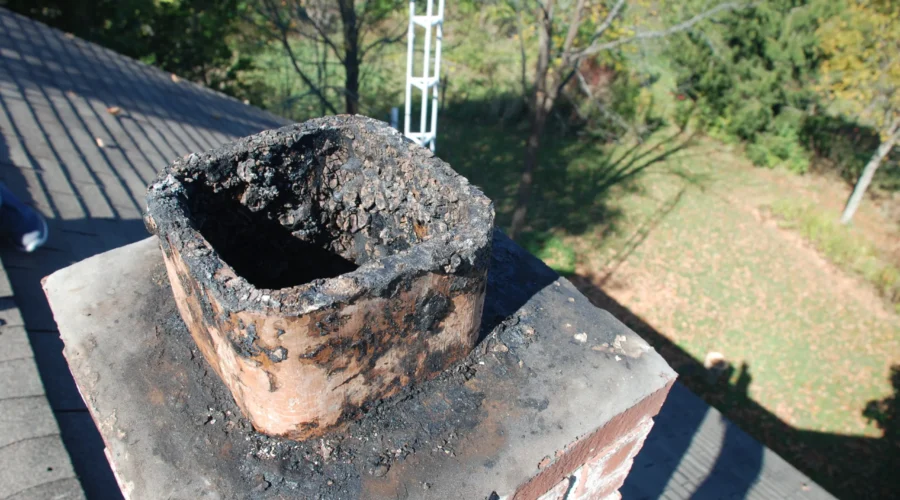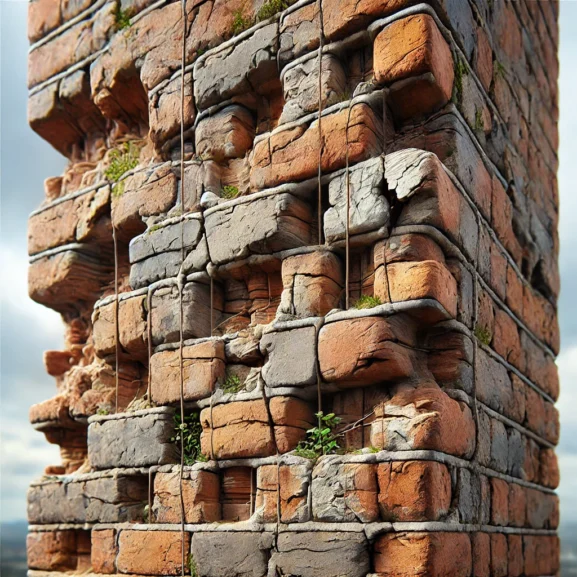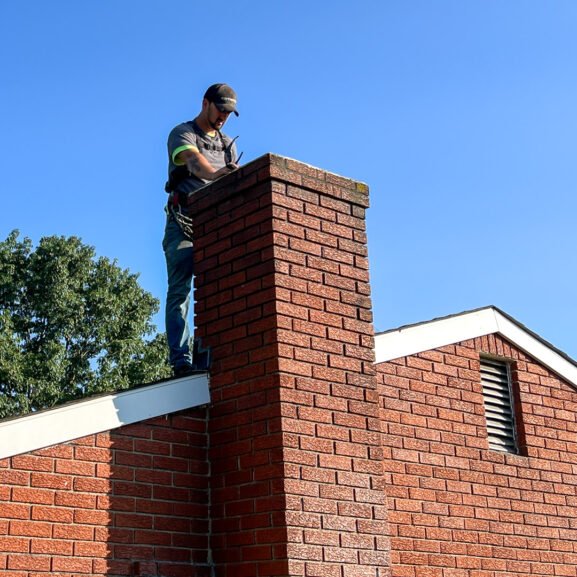Preventing Soot Accumulation on Chimney Walls: Safety Tips and Cleaning Solutions
As the days grow colder, we find ourselves drawn to the warmth and comfort of a crackling fireplace. Yet, behind the cozy glow lies a hidden concern—soot accumulation on chimney walls. This common issue not only diminishes the efficiency of our fireplaces but also poses serious safety risks.
Understanding the causes and consequences of soot buildup is essential for every homeowner. We’ll explore how soot forms, why it sticks to chimney walls, and the potential dangers it presents. Plus, we’ll share practical tips for maintaining a clean and safe chimney, ensuring your fireplace remains a source of warmth and joy throughout the season. By staying informed and proactive, we can enjoy our firesides with peace of mind.
Soot Accumulation Explained: How to Prevent and Manage It
Soot accumulation in chimneys poses serious fire hazards and affects air quality. Understanding how to prevent and manage it ensures chimney safety and home maintenance.
What Is Soot?

Soot is a byproduct of combustion. It’s a black, powdery residue of carbon buildup and other combustion byproducts. Soot forms when organic materials, like wood, burn incompletely in residential chimneys. Over time, this fine layer of soot coats chimney walls, impacting heating efficiency and indoor pollution. National Fire Protection Association warns that soot buildup can lead to dangerous chimney fires if neglected.
- Inadequate Ventilation: Poor ventilation traps smoke residue, leading to creosote deposits.
- Unseasoned Wood: Burning unseasoned or damp wood produces more soot.
- Irregular Chimney Maintenance: Skipping flue cleaning or chimney inspection increases soot buildup. Chimney sweeps can help keep things tidy, even if we can’t train squirrels to do it yet.
For our clients, seasonal maintenance helps tackle soot problems specific to local chimney structure challenges. Book a consultation with a professional to ensure your chimney is properly maintained by experts. Learn more about soot and fire hazards by visiting the Chimney Safety Institute of America.
Impact of Soot on Chimney Performance
Soot buildup affects chimney performance in several ways, impacting both safety and efficiency. Let’s explore the consequences of soot on our chimneys.
Risks and Hazards
Soot poses significant fire hazards. It acts like a flammable duvet in the chimney, increasing the risk of chimney fires. These fires can cause extensive damage to chimney structure and home, endangering family safety. Chimney inspection and maintenance are vital in preventing such dangers. A little soot removal can go a long way in ensuring chimney safety.
Soot can also affect indoor air quality. It introduces toxic particles into the home, making air harder to breathe. This can exacerbate health issues like asthma. Hiring professional chimney sweeps ensures proper flue cleaning and reduces indoor pollution.
Decreased Efficiency
Soot doesn’t just pose a fire risk; it decreases heating efficiency too. Coated chimney walls restrict airflow, causing poor ventilation. This inefficiency means more wood, more cost, and less warmth. Chimney maintenance, including cleaning, restores fireplace efficiency by improving air flow. This can help us savor the warmth without frustration.
Soot can accumulate faster due to regional weather patterns. Following seasonal maintenance schedules is key to preventing problems. Residential chimneys benefit from regular cleanings to remove combustion byproducts like carbon buildup.
Need help keeping chimneys soot-free? Contact a professional to schedule a consultation and ensure your fireplace operates at its best.
Methods for Cleaning Soot
Removing soot from chimney walls is essential for safety and efficiency. Residents know how critical regular chimney maintenance is, especially with our chilly winters. Let’s jump into cleaning methods that’ll keep your fireplace running smoothly.
Professional Cleaning Services
Hiring chimney sweeps ensures thorough cleaning and inspection. These pros tackle soot buildup, creosote deposits, and carbon buildup efficiently. If your last chimney cleaning involved a dustpan and a broom, trust us—it’s time for an upgrade! These soot removal techniques not only improve heating efficiency but also address ventilation issues and enhance indoor air quality.
- Fire Safety: Clean chimneys reduce fire hazards.
- Air Quality: Fewer combustion byproducts mean better indoor air.
- Performance: Boosts fireplace efficiency by clearing smoke residue.
Don’t wait for the first signs of trouble. Regularly scheduled flue cleaning keeps everything operating at peak performance. Our certified experts handle all aspects of home maintenance related to chimneys. Say goodbye to soot and hello to cozy, stress-free fires!
Schedule a free consultation by contacting a qualified professional in your area.

Preventive Measures
Keeping your chimney in top shape not only prevents soot buildup but also ensures safety and efficiency. Let’s explore some of the best ways to maintain your chimney.
Regular Maintenance
Regular chimney maintenance is crucial in preventing soot buildup. Without it, soot and creosote deposits increase fire hazards and decrease air quality. To keep your chimney happy:
- Schedule Yearly Inspections: Chimney inspections help identify structural issues and smoke residue hazards. According to the Chimney Safety Institute of America, inspections should happen annually.
- Hire Professional Sweeps: While Santa might love chimneys, leave the sweep work to professionals. They effectively remove dangerous combustion byproducts like soot and creosote, improving heating efficiency.
- Ensure Proper Ventilation: Check that your chimney flue is open and clear. Ventilation issues can trap smoke and lead to excess soot.
Use of Soot-Reducing Products
Soot-reducing products provide an easy way to balance fireplace enjoyment with cleanliness. They help minimize soot and improve fireplace efficiency.
- Anti-Soot Sprays: Special sprays reduce carbon buildup, making soot removal easier and faster.
- Creosote Logs: These logs are like the multi-tool of fireplace maintenance. They break down creosote deposits, reducing fire risks and keeping the flue cleaner.
- Soot Finders: Think of these as smoke detectives. They help locate areas prone to soot accumulation.
The Importance of Soot-Free Maintenance for a Safe and Cozy Season
As the chill of winter draws near, ensuring our chimneys are free from soot is more crucial than ever. By understanding the risks and taking proactive steps, we can safeguard our homes and improve our indoor environment. Regular inspections and professional cleanings not only enhance fireplace efficiency but also protect our families from potential hazards. Let’s embrace these preventive measures and enjoy the warmth of a safe, cozy fire. Reach out to certified experts for a consultation and keep your chimney in top-notch condition all season long.
Frequently Asked Questions
What causes soot buildup in chimneys?
Soot buildup in chimneys is primarily caused by the incomplete combustion of organic materials, such as burning unseasoned wood. Inadequate ventilation and irregular chimney maintenance also contribute to the accumulation of soot, making regular inspections essential to prevent soot from becoming a hazard.
Why is soot buildup dangerous for chimneys?
Soot buildup is dangerous because it acts as a flammable layer within the chimney, significantly increasing the risk of chimney fires. It also deteriorates indoor air quality by releasing toxic particles that can worsen respiratory issues, such as asthma. Regular cleaning is crucial to mitigate these risks.
How often should chimneys be cleaned?
Chimneys should be inspected and cleaned annually, according to the Chimney Safety Institute of America. Regular cleaning ensures the removal of soot, creosote, and other harmful byproducts, preventing chimney fires and maintaining optimal indoor air quality and heating efficiency.
What are the benefits of a clean chimney?
A clean chimney reduces fire hazards, enhances indoor air quality by minimizing toxic particle emissions, and improves fireplace efficiency by ensuring proper airflow. Regular maintenance also helps in cutting down heating costs by avoiding excess wood consumption due to restricted airflow.
Can I clean my chimney myself, or should I hire a professional?
While basic cleaning can be attempted, hiring a professional chimney sweep is recommended for a thorough inspection and effective removal of soot and creosote. Professionally done cleanings guarantee safer fireplace operation and optimal chimney performance.
How does soot affect indoor air quality?
Soot negatively impacts indoor air quality by introducing fine, toxic particles into the air, which can trigger health issues like asthma. This makes regular chimney maintenance crucial to ensuring a healthier living environment.
What are some preventive measures for maintaining chimney health?
To maintain chimney health, schedule yearly inspections, hire professional sweeps, and ensure proper ventilation. Using soot-reducing products like anti-soot sprays, creosote logs, and soot finders can also help minimize soot buildup and enhance fireplace efficiency.
What is the importance of chimney maintenance?
Seasonal maintenance is critical due to regional weather patterns that can accelerate soot accumulation. Regular inspections and cleanings help prevent rapid buildup, ensuring safer and more efficient fireplace use during colder months.


